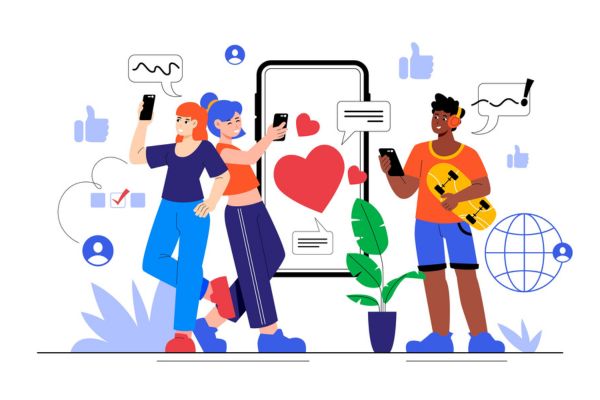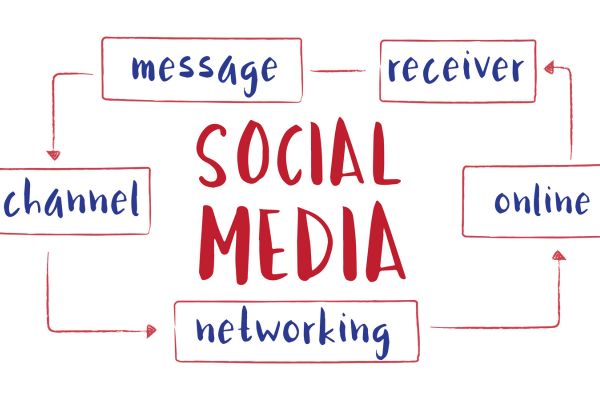Understanding how to become an influencer has become increasingly relevant as more individuals and brands build visibility through social media platforms. Influencers are often seen as content creators who consistently share ideas, interests, or experiences with a dedicated audience. Their role involves producing engaging material, building trust with followers, and maintaining an active online presence.
The path to becoming an influencer typically involves choosing a niche, creating valuable content, and developing a recognizable personal brand. While results may vary, a structured and consistent approach can increase visibility and foster long-term growth across digital channels.
For background on how influencer campaigns function within broader marketing strategies, visit what is influencer marketing and how it works.

What Is an Influencer?
An influencer is generally defined as someone who has the ability to shape opinions, trends, or purchasing decisions through content shared on social or digital platforms. This influence is often built through trust, subject matter expertise, and consistent communication with an engaged audience. Influencers may operate within a specific niche such as fashion, gaming, technology, or wellness, and typically produce content that aligns with the interests of their followers.
Influencers do not necessarily require a massive following. Instead, their effectiveness is often measured by audience engagement, authenticity, and relevance within a particular field or community.
Types of Influencers (Nano, Micro, Macro, Mega)
Influencers are commonly categorized based on the size of their following:
- Nano-influencers: Typically have between 1,000 to 10,000 followers. Known for high engagement rates and close-knit communities, nano-influencers often focus on local or niche topics.
- Micro-influencers: Generally have 10,000 to 100,000 followers. They maintain a strong connection with their audience and are considered effective for targeted marketing and community-driven content.
- Macro-influencers: Range from 100,000 to 1 million followers. This group often includes content creators, professionals, or public figures with wide reach and growing influence in broader categories.
- Mega-influencers: Usually have over 1 million followers. These influencers may include celebrities, well-known creators, or public personalities with significant media presence and broad appeal.
Each category plays a different role in digital communication and brand collaboration, depending on goals such as reach, engagement, or niche relevance.
Why Become an Influencer?
The role of an influencer has grown beyond content sharing and audience engagement. For many, it represents a strategic path to build visibility, communicate expertise, and create professional opportunities. The decision to pursue this role can be influenced by various goals: personal, financial, or career-oriented. Below are some of the key reasons people explore this path.
Personal Branding
Becoming an influencer allows individuals to develop a distinct personal brand. This includes building a recognizable identity, tone of voice, and visual style across digital platforms. A strong personal brand can lead to increased credibility, authority within a specific niche, and long-term recognition. It often serves as a foundation for expanding into related projects or collaborations.
Monetization Opportunities
Influencers can access multiple revenue streams, depending on their audience size and niche. These may include brand sponsorships, affiliate marketing, product collaborations, paid subscriptions, or direct sales. Monetization is often tied to audience engagement rather than follower count, making it possible for even smaller accounts to generate income through consistent and relevant content.
Career Growth & Networking
Influencer activity can open doors to broader career opportunities. Participation in campaigns, events, or partnerships may lead to roles in content strategy, brand consulting, or public speaking. In addition, being active within a specific online community often leads to networking with industry professionals, other creators, and businesses. These connections can support career advancement and professional development over time.
For a deeper understanding of campaign strategies and collaboration models, see our full influencer marketing guide.

How to Become an Influencer: A Step-by-Step Guide
Building a presence as an influencer involves more than just posting content. It requires a structured approach, clear focus, and a long-term mindset. The following steps outline how aspiring influencers can start and grow in a sustainable way.
Step 1: Choose Your Niche and Audience
Defining a niche is the foundation of any influencer strategy. A clear focus helps create relevant content, attract the right audience, and stand out in a competitive landscape. At the same time, understanding the intended audience makes it easier to communicate effectively and build trust.
How to Find a Profitable Niche
A profitable niche balances personal interest with market opportunity. It should be specific enough to define the content direction, but broad enough to attract a sustainable audience.
Passion vs. market demand – Passion provides consistency and authenticity, which are essential for long-term engagement. However, aligning that passion with topics people actively search for or engage with increases the potential for growth. Researching audience trends and keyword interest can help determine whether a niche has both relevance and reach.
Analyzing competitors in your niche – Observing established influencers in the chosen niche offers insight into what works. Reviewing their content strategies, audience interactions, and posting frequency can reveal gaps or opportunities. Competitive analysis helps identify how to differentiate content while staying aligned with audience expectations.
Step 2: Select the Right Platforms
Choosing the right platform is a critical step in building influence. Each platform serves different types of content, audiences, and engagement styles. The decision should align with the content format, niche, and long-term goals.
Instagram & TikTok for Visual Content
Instagram and TikTok are popular choices for influencers focused on lifestyle, fashion, travel, fitness, and similar visual-based niches. Instagram offers features like Stories, Reels, and carousels for curated content, while TikTok favors short, engaging, and often trend-driven videos. Both platforms reward consistency, creativity, and interaction.
YouTube for Long-Form Videos
YouTube supports in-depth content and storytelling. It’s commonly used for tutorials, reviews, vlogs, and educational content. Long-form video allows influencers to build deeper audience relationships and demonstrate subject expertise. The platform also offers strong monetization options through ads and partnerships.
LinkedIn for Professional Influence
LinkedIn is well-suited for individuals in B2B, career coaching, entrepreneurship, and thought leadership. It supports content formats such as articles, professional updates, and short videos. Influencers on LinkedIn often focus on industry insights, professional development, and networking.
Blogging & Pinterest for SEO-Driven Growth
Blogs and Pinterest are effective for evergreen content and search visibility. Blogging allows for long-form written content optimized for search engines, while Pinterest acts as a visual discovery tool. This combination can drive consistent traffic over time and support multiple income streams such as affiliate links, product promotion, and email list growth.

Step 3: Build Your Personal Brand
A strong personal brand helps create recognition, trust, and consistency across platforms. It defines how content is presented, how messages are delivered, and how the audience connects with the influencer’s identity. Personal branding is not just visual, it includes tone, values, and the overall impression left on viewers.
Creating a Unique Brand Identity
A clear brand identity sets the foundation for long-term growth. It involves defining the core message, values, and style that will be reflected across content. A recognizable identity helps differentiate from others in the same niche and supports audience loyalty.
Username, Bio, and Profile Optimization: The username should be easy to remember and consistent across platforms, if possible. A well-written bio quickly explains what the content is about and who it’s for. Profile photos, banners, and links should all reflect the niche and contribute to a professional first impression. Including keywords in bios or headlines can also improve visibility in platform search.
Consistent Aesthetic & Tone of Voice: Visual consistency helps reinforce brand recognition. This includes color schemes, filters, layout choices, and graphic elements. Equally important is maintaining a consistent tone of voice: formal, casual, educational, or humorous. Both visual and verbal elements should match the brand’s message and appeal to the target audience.
Step 4: Create High-Quality Content
Content is the core of influencer activity. It provides value, builds audience trust, and drives engagement. High-quality content is relevant, well-executed, and aligned with the influencer’s niche and brand identity. Consistency in quality and delivery often has a greater impact than frequency alone.
Content Types: Blogs, Videos, Podcasts, and More
Different formats serve different purposes and audiences:
- Blogs are ideal for long-form content and SEO-driven growth. They allow for in-depth explanations, tutorials, or personal insights.
- Videos are widely used across platforms and support both short-form (TikTok, Reels) and long-form (YouTube) storytelling.
- Podcasts offer a voice-driven format suitable for interviews, discussions, or deep dives into niche topics.
- Images and graphics are essential for visual platforms like Instagram and Pinterest.
- Live content, such as live streams or AMAs, can strengthen audience interaction in real-time.
Choosing formats should be based on the audience’s habits, platform strengths, and content goals.
Content Planning and Scheduling
Planning content in advance improves consistency and reduces the risk of creative gaps. A content calendar helps outline what will be published, when, and on which platform. This can include campaign dates, seasonal topics, or recurring themes.
Scheduling tools allow posts to be prepared in advance and published automatically. This supports a regular posting rhythm, especially across multiple channels, while leaving room for spontaneous or trending content.
Step 5: Grow Your Audience
Audience growth is a gradual process that depends on consistency, relevance, and meaningful interaction. While quality content builds the foundation, ongoing engagement and strategic use of social platforms help expand reach and visibility over time.
Utilizing Social Media Platforms Effectively
Each platform has its own algorithm, tools, and trends. Leveraging features such as hashtags, Stories, Reels, live streams, or trending audio can increase content exposure. Posting regularly and staying up to date with platform changes improves performance. Cross-posting content and sharing platform-specific teasers can also drive users from one channel to another, supporting broader growth.
Engaging with Your Audience
Building a loyal audience requires more than just broadcasting content. Responding to comments, asking questions, and encouraging participation helps build community. Content that invites interaction, such as polls, Q&As, or feedback prompts, often performs better and strengthens the relationship between creator and audience.
Collaborating with Other Influencers
Partnering with others in the same or complementary niches can expose content to new audiences. This can include guest content, joint livestreams, shoutouts, or co-branded projects. Strategic collaborations provide mutual value and often lead to more visibility than solo efforts, especially when both parties share aligned interests and goals.

Step 6: Monetize Your Influence
Once an audience is established and engagement is consistent, monetization becomes a natural next step. There are several ways to turn influence into income, depending on niche, platform, and content strategy. Diversifying revenue streams often leads to more sustainable growth over time.
1. Sponsored Posts & Brand Deals
Brands often partner with influencers to promote products or services. These collaborations typically involve creating content that highlights a brand while maintaining authenticity and audience trust. Sponsored posts may be one-time campaigns or part of long-term partnerships, and compensation varies based on reach, engagement, and content type.
Those looking to collaborate with brands may benefit from understanding how to hire influencers and how brands evaluate partnerships.
2. Affiliate Marketing & Commission Sales
Affiliate programs allow influencers to earn a commission when followers purchase through referral links. This model works well with product recommendations, tutorials, or review-based content. Success with affiliate marketing often depends on audience alignment and the influencer’s ability to offer genuine value or insight.
3. Selling Digital Products or Services
Many influencers create and sell their own digital products such as e-books, online courses, templates, or presets. Others offer services like coaching, consulting, or design. This model allows full control over pricing and branding, and it’s especially effective for those with expertise in a specific area.
4. Memberships & Exclusive Content
Offering paid memberships or subscription-based content is another way to monetize. Platforms like Patreon or channel memberships on YouTube give audiences access to exclusive posts, behind-the-scenes updates, or direct communication. This approach often strengthens audience connection while providing recurring income.
Step 7: Staying Authentic and Ethical
Sustaining influence over time depends not only on reach and content quality but also on trust. Authenticity and ethical behavior help build long-term credibility and protect the relationship between the influencer and the audience. In many cases, this also contributes to better engagement and brand reputation.
Maintaining Transparency with Your Audience
Clear communication around sponsored content, partnerships, and personal opinions builds trust. Disclosing paid promotions, gifted products, or affiliate links is not just a best practice—it is often a legal requirement. Transparency also involves being honest about experiences, setting realistic expectations, and avoiding misleading or exaggerated claims.
Adhering to Platform Guidelines and Regulations
Each platform has its own rules regarding content, advertising, and community behavior. Following these guidelines helps prevent penalties such as reduced visibility or account suspension. Additionally, influencers should stay informed about advertising standards, copyright rules, and regional regulations that apply to sponsored content or user data.

Overcoming Challenges as an Influencer
While becoming an influencer can offer many rewards, it also presents a set of challenges that require careful attention. From public feedback to time management, handling these aspects is essential for long-term sustainability and mental well-being.
Dealing with Negative Feedback: Public-facing content often invites criticism, whether constructive or not. Managing negative feedback involves distinguishing between helpful input and unproductive comments. Many influencers establish clear community guidelines and moderate their platforms to maintain a respectful environment. Emotional resilience and a focus on long-term goals are key when navigating criticism.
Managing Work-Life Balance: The line between personal time and online presence can blur easily. Maintaining a healthy work-life balance involves setting boundaries for screen time, content production, and social engagement. Planning breaks, delegating tasks, and creating a structured routine help avoid burnout and preserve content quality over time.
Common Mistakes to Avoid as a New Influencer
Starting as an influencer involves a learning curve. Avoiding common missteps early on can lead to healthier growth, stronger engagement, and a more sustainable presence.
- Buying Fake Followers – Purchasing followers may increase numbers on the surface, but it damages credibility and lowers engagement rates. Algorithms often detect inauthentic activity, which can reduce content visibility. Brands and audiences value genuine influence built through trust, not inflated metrics.
- Inconsistent Posting – Irregular posting can disrupt audience interest and limit reach. Platforms often prioritize consistent activity when promoting content. Establishing a manageable posting schedule helps maintain visibility and keeps the audience engaged over time.
- Ignoring Audience Feedback – Overlooking comments, suggestions, or engagement patterns can lead to missed opportunities for growth. Feedback provides insight into what resonates and what needs adjustment. A responsive approach often results in higher loyalty and better performance across platforms.
How Long Does It Take to Become an Influencer?
The timeline for becoming an influencer varies widely and depends on multiple factors such as niche, content quality, platform choice, and consistency. While some may gain traction quickly through viral content, most see steady growth over an extended period.
Building a loyal audience and recognizable presence takes time. Setting realistic goals and focusing on gradual improvement is often more effective than chasing rapid success. Patience, paired with continuous learning and consistent effort, typically leads to more stable and long-term influence.

Final Summary
Becoming an influencer is a structured process that involves clear planning, ongoing effort, and a deep understanding of both content and audience. From selecting the right niche to maintaining authenticity, each step plays a role in long-term success. While there is no single path, consistency, adaptability, and audience focus remain central to sustained growth.
For those ready to take the next step, tools like Hypefy’s Influencer Discovery Tool and Influencer Outreach Tool can support key parts of the journey, from identifying the right collaborations to managing communications. Brands and creators looking to streamline partnerships can also explore the Hypefy Influencer Marketplace for direct access to verified creators.
Starting may take time, but with the right foundation, building influence is achievable and rewarding.



